Closed 1997 | Security class Maximum security Opened 1851 | |
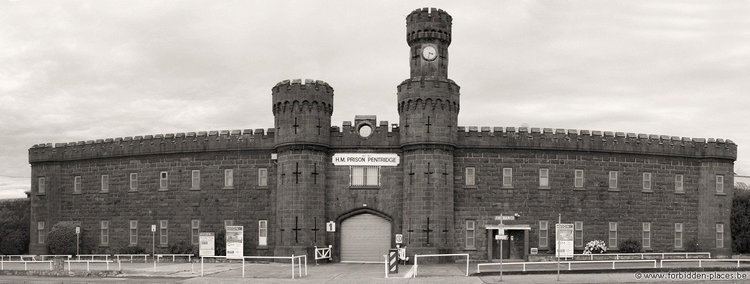 | ||
Status Closed, under redevelopment Similar | ||
Hm prison pentridge
Her Majesty's Prison Pentridge was an Australian prison that was first established in 1851 in Coburg, Victoria. The first prisoners arrived in 1851. The prison officially closed on 1 May 1997.
Contents
- Hm prison pentridge
- Divisions
- Panopticons
- Jika Jika high security unit
- 1987 Jika Jika prison fire
- Prison works
- Future of the site
- Grave sites
- Executions
- Last execution
- Notable prisoners
- Timeline
- Escapes
- Usage in media
- References
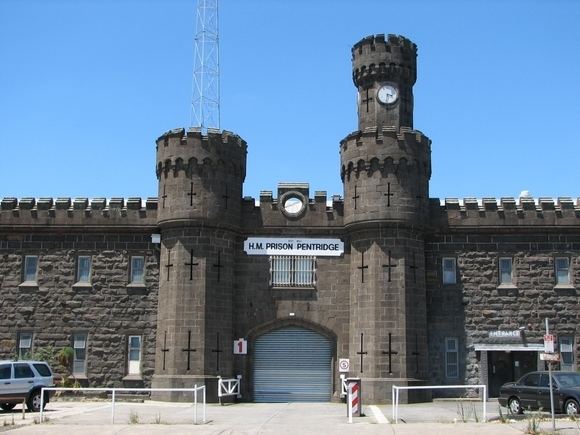
Pentridge was often referred to as the "Bluestone College", "Coburg College" or "College of Knowledge". The grounds were originally landscaped by renowned landscape gardener Hugh Linaker.
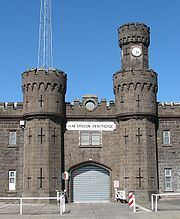
The site is currently split into two parts.
The northern part of the prison, referred to as the “Pentridge Coburg” or “Pentridge Piazza“ site, is bordered by Champ Street, Pentridge Boulevard, Murray Road and Stockade Avenue. It is currently under development by the developer Shayher Group, who has owned the site since 2013. The southern part of the prison, referred to as the “Pentridge Village” site, is bordered by Pentridge Boulevard, Stockade Avenue, Wardens Walk and Urquhart Street. It is currently owned by the developer Future Estate.

Divisions
The prison was split into many divisions, named using letters of the alphabet.
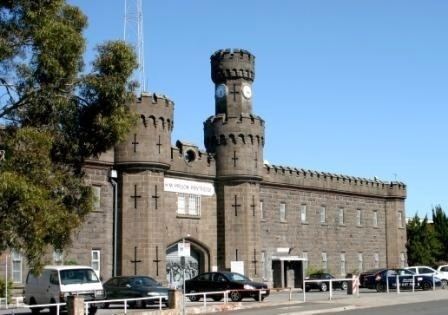
Panopticons

In 2014, archaeological work in the former prison grounds led to the discovery of three rare panopticons (named after Jeremy Bentham’s prison design of 1791) located near the A and B Divisions that were built of bluestone in the 1850s. The first uncovered and excavated was to the north of A division and was built of bluestone in the 1850s. The circular design, with walls coming out from the centre, created wedge shaped 'airing yards' where prisoners would be permitted access for one hour per day without coming into contact with each other. The panopticons fell out of use, due to prison overcrowding, and were largely demolished in the early 1900s. The panopticons were based on the design concepts of British philosopher and social reformer Jeremy Bentham. The footings of the first panopticon that was excavated and uncovered is located to the north of A Division and remains relatively intact. The excavation and uncovering of the other two panopticons next to B Division only revealed the remains of its rubble footings.
Jika Jika high security unit
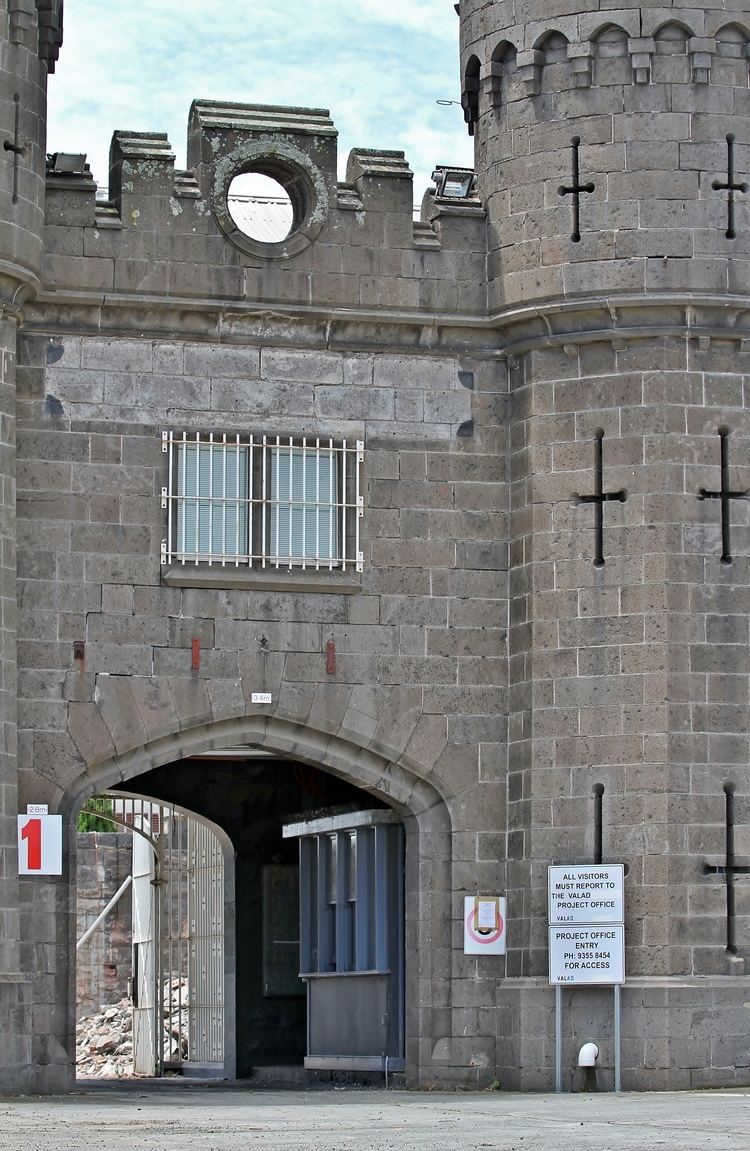
Jika Jika, opened in 1980 at a cost of 7 million Australian dollars, was a 'gaol within a gaol' maximum security section, designed to house Victoria's hardest and longest serving prisoners. It was awarded the 'Excellence in Concrete Award' by the Concrete Institute of Australia before being closed, 8 years later, amidst controversy after the deaths of five prisoners in 1987.
The design of Jika Jika was based on the idea of six separate units at the end of radiating spines. The unit comprised electronic doors, closed-circuit TV and remote locking, designed to keep staff costs to a minimum and security to a maximum. The furnishings were sparse and prisoners exercised in aviary-like escape proof yards.
In 1983 four prisoners escaped from ‘escape proof’ Jika Jika. When two prison officers were disciplined in relation to the Jika Jika escape a week-long strike occurred.
1987 Jika Jika prison fire
Inmates Robert Wright, Jimmy Loughnan, Arthur Gallagher, David McGauley and Ricky Morris from one side of the unit, and convicted Russell Street bomber Craig Minogue and three other inmates on the other side, sealed off their section doors with a tennis net. Mattresses and other bedding were then stacked against the doors and set on fire. Wright, Loughnan, Gallagher, McGauley and Morris died in the blaze, while Minogue and the three others were evacuated and survived.
Prison works
In 1851, an ad-hoc group of structures built by prison labour using local materials existed. None of these structures survived, other than the boundaries of the prison that were established. The second phase of construction, undertaken in the late 1850s and early 1860s, was the construction of Inspector General William Champ's model prison complex, based on British and American precedents.
In 1924, Pentridge replaced the Melbourne Gaol as the main remand and reception prison for the metropolitan area. In 1929, Melbourne Gaol was closed and its prisoners relocated to Pentridge. The Victorian Government confirmed its intention to close Pentridge and replace it with two new male prisons, each accommodating around 600 prisoners, in December 1993. In April 1995, the Office of Corrections ordered that the six main towers at Pentridge be closed, since most of the high security prisoners from the gaol had been relocated to Barwon as part of the downgrading of Pentridge to a medium security prison. The prison was finally closed in 1997 and sold by the State Government of Victoria.
Since the site was closed, almost all of the buildings identified as being of no significance in the 1996 Pentridge Conservation Management Plan (1996 CMP) prepared by Allom Lovell & Associates have been demolished with the approval of Heritage Victoria. The remaining heritage buildings and landmarks of significance, including A, B, E and H Divisions, B Annexe, Pentridge’s iconic entrance, the Administration Building, the Warden’s Quarters, the Rock-Breaking Yards, the Guard Towers/Posts (or Observation Posts) and the wall surrounding the site have been retained and will undergo restoration works to ensure their stability and preservation into the future. The site as a whole is also classified as a place of state significance by the National Trust of Australia (Victoria) (National Trust). The National Trust has adopted the levels of significance identified in the 1996 CMP.
Future of the site
A number of the iconic heritage building landmarks on the site are located at the Pentridge Coburg site. The heritage features of these landmarks are protected and will be retained and integrated into a new community precinct that will feature a mix of housing types, retail, public open space and open piazza as set out in the Pentridge Coburg Design Guidelines and Masterplan of February 2014 (Pentridge Coburg Masterplan).
This document forms part of the Moreland Planning Scheme and was approved by The Hon. Matthew Guy, the Victorian Minister for Planning between December 2010 to December 2014. A similar Masterplan exists for the Pentridge Village site (Pentridge Village Masterplan). The National Trust has expressed strong concerns about the nature of these Masterplans, which involves building high-density high-rise between the historic divisions.
In 2016, Shayher Group revealed plans for a new urban village to revitalise Pentridge Prison and breathe new life into the historical asset. This includes up to 20 new buildings designed to complement the existing heritage landmarks and numerous community spaces as well as public amenities including an open piazza, forecourt areas and public open space including landscaped gardens as set out in the Pentridge Coburg Masterplan. Shayher Group also revealed its plans to invest several million dollars to restore the roof of A Division, the seven guard towers on site and the rock-breaking yards. These restoration works are anticipated to be completed by late 2018.
Grave sites
The grave site of bushranger Ned Kelly formerly lay within the walls of Pentridge Prison while Ronald Ryan's remains have been returned to his family. Kelly was executed by hanging at the Melbourne Gaol in 1880 and his remains moved to Pentridge Prison in 1929, after his skeleton was disturbed on 12 April 1929 by workmen constructing the present Royal Melbourne Institute of Technology (RMIT) building. Peter Norden, former prison chaplain at Pentridge Prison, has campaigned for the site's restoration.
As of 2011, most of the bodies have been exhumed by archaeologists and have either been re-interred in the original cemetery near D Division, are awaiting identification at the Melbourne morgue or have been returned to their families.
In 2011, Ned Kelly's remains were once again exhumed and returned to his surviving descendants for a proper family burial. The identified remains of Kelly did not include most of his skull. DNA testing also established another complete skull believed to be Kelly's was not in fact his.
Executions
Last execution
Ronald Ryan was the last man executed at Pentridge Prison and in Australia. Ryan was hanged in "D" Division at 8.00 on 3 February 1967 after being convicted of the shooting death of a prison officer during a botched escape from the same prison. Later that day, Ryan's body was buried in an unmarked grave within the "D" Division prison facility.
